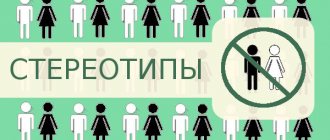Racial discrimination is unfavorable treatment of an applicant for a job or an employee of a company due to certain characteristics of his race. Racial discrimination can also include treating someone unfavorably because they are related to or married to a person of a certain race.
Racial discrimination is considered a serious offence. New Yorkers are protected from racial discrimination by employers under Title 7 of the Civil Rights Act of 1964 (Title 7), the New York State Civil Rights Act, and the New York City Civil Rights Law.
- Know your rights
- Examples of illegal racial discrimination
- Refusal to receive a promotion
- Not equal pay
- Racial stereotypes and discrimination
- Discriminatory policy
- Discrimination based on skin color
- Associative discrimination
- Working in a Hostile Environment
- How to fight racial discrimination
- Legal protection against reprisals
- How to file a claim
- Remedies against racial discrimination
Know your rights
An employer cannot make hiring decisions based on your race.
Employers should make hiring decisions based on your skills and abilities, not your race. This applies to decisions regarding hiring, firing, suspension, discipline, distribution of compensation, incentives, wages, training or any other terms and conditions of employment.
If you are a victim of racial discrimination, you are protected by New York State, City and US federal law.
Activities of the Ku Klux Klan
The Ku Klux Klan is a far-right organization that arose in the United States in 1865. Discrimination (racial) against blacks and their physical extermination was its main goal. The ideological doctrine of the Ku Klux Klan was based on the idea of the superiority of the white race over others.
Some interesting facts from the history of the organization:
- The Ku Klux Klan was revived three times. In 1871 the organization was dissolved for the first time. After a revival in the early 20th century, the Ku Klux Klan ceased to exist during World War II. The new re-establishment of the organization dates back to the 1970s.
- The grotesque costumes worn by the KKK members were truly terrifying. They consisted of a wide robe, a long pointed hat and a mask.
- Today the Ku Klux Klan is not a single organization. Separate centers of its activity exist in different countries.
Examples of racial discrimination
Hiring decisions made based on race are illegal.
Making hiring or firing decisions based on race violates the law. This refers to adverse employment decisions due to association with a person of a certain race.
Examples
- You apply for a job
in which you have experience and excellent qualifications, but you were not accepted due to the fact that one of the company's regular clients is not comfortable communicating with African-Americans. - You were told that they were being laid off
due to downsizing and reorganization of the company, while white employees with the same position and less experience kept their jobs.
Denying promotions based on race is illegal.
Racial discrimination laws also protect employees from being denied promotions and tenure because of race or racial stereotyping.
Examples
- You worked for a company as a lower-level manager for many years and had excellent reviews. The number of responsibilities increased during this period, but this did not affect the basic rate and salary
. At the same time, your white colleagues were promoted to middle or senior management levels due to increased job responsibilities. - You have been working in this company for many years, show exemplary results and have become employee of the year more than once. However, every time you apply for a promotion
, the vacancy is filled by a less qualified person of a different race.
Pay differences based on race are illegal
The law protects you from racial disparities in all forms of compensation, including wages, overtime, bonuses, options, earnings, life insurance, vacation pay, or holiday pay.
Examples
- You have worked your way up to the position of regional manager. But you learned that a regional manager of a different race with the same education and work experience will earn more
than you. - You are the best salesperson in the company, but your employer moves
you to a territory that is not in demand, while a white employee with lower sales is given your territory and customer base, allowing him or her to make much more profit than you . The law prohibits the assignment of minorities to agencies or geographic areas where predominantly minorities work.
Racism in the USA: blacks or African Americans?
Racial discrimination in the United States dates back to before the founding of the state. In America, Indians (indigenous people) and blacks were considered inferior. Only “white people” had civil rights. Black slaves were first brought into the country by English colonists at the beginning of the 17th century. Slave labor from Africa was widely used in the plantation economy, especially in the southern United States.
Officially, the elimination of racial discrimination in the United States began in 1808. This year, the state Congress banned the bringing of new black workers into the country. In 1863, slavery was officially abolished. This event was recorded in 1865 in the 13th Amendment to the US Constitution.
Despite the abolition of slavery, during this period racial segregation became widespread - a form of racial discrimination, the practice of limiting the black population to separate areas of residence or assigning them to certain institutions (for example, schools). Officially, it existed since 1865.
Significant progress in eliminating racism in the United States began only in the middle of the 20th century. It was associated with a number of new laws equalizing the rights of Americans, Indians and African Americans.
Racial stereotypes and discrimination
An employer may not dislike you because of your personality or racial stereotypes.
The law prohibits hiring employees based on stereotypes, abilities, or characteristics of individuals from certain racial groups. Employers may not dislike you because of your race, such as your hair texture, skin color, or facial features.
Protective practices or characteristics include wearing national dress, manners, or speech, as long as they do not affect the performance of job duties. For example, an employer cannot deny you a promotion on the grounds that you wear braids or dreadlocks.
Employers cannot justify decisions made on the grounds of racism because of the expected actions of employees or customers.
Employers should not base decisions made on racist grounds on business considerations, such as employee relations or a negative reaction from a client or customer.
Employers cannot segregate workers based on race.
If an employer physically isolates a certain group of employees from other employees or customers because of race, this may be considered racial discrimination.
Restricting national minorities from work or excluding them completely from certain or several positions is considered illegal.
Policies with discriminatory consequences
Unintentional racial discrimination is also illegal.
A company policy that appears to be neutral may be discriminatory if it disproportionately harms workers of a particular race, except when it does not relate to work. For example:
- A seemingly neutral company policy requiring all employees to have a high school diploma may exclude African-Americans and/or Hispanics because they have lower rates of academic achievement among high school graduates. If a high school diploma is not necessary to perform a specific task, such as manual labor, then the policy may be considered discriminatory.
- Company “no beard” policies that apply to all employees regardless of race may be considered discriminatory and illegal if they are not job-related and have a negative impact on the performance of African-American men who are susceptible to skin irritation caused by shaving. .
What is discrimination?
Discrimination is the restriction or deprivation of the rights (benefits) of certain social or national groups based on gender, race, political or religious views. Discrimination can occur in all areas of society. For example, in the social sphere it appears in the form of restricting access to education or benefits.
Today, discrimination (racial, sexual, religious) is condemned by the international community. Depriving people of rights and freedoms for any reason is contrary to the modern value system.
Associative discrimination
You do not have to be a member of a protected race to be a victim of racial discrimination.
It is also illegal to discriminate against a person because he or she is related to someone of a different race.
Employers cannot treat you inappropriately because:
- Marriage or relationship with a person of a different race.
- Memberships or affiliations with ethnic organizations or groups.
- Presence or activities in schools, religious or other cultural institutions associated with racial minorities.
Racial discrimination can occur when the victim and the person causing the conflict are of the same race and color.
Race or skin color may not become a professional characteristic.
Forms
Considering this type of discrimination, there are three forms:
- Apartheid, as a form of racial discrimination, is defined as the deprivation of rights in all spheres of life (politics, economics, society), directed against a specific group of the population, taking into account its membership in a particular race. Territorial isolation is possible. In the 24th year of the twentieth century, a law was passed in South Africa that determined separate residence for representatives of different races. Three years later, a law comes into force that prohibits intimacy between people of different skin colors, considering it as immoral.
- Genocide. Is the deliberate extermination of representatives of a particular nation, in which mass killings occur. Destruction is determined by one of the characteristics: race, ethnicity, nationality, religious views. During the First World War, Armenians were slaughtered - one million eight hundred thousand, during the Second - Jews (6 million). Genocide, according to international standards, is defined as the killing of more than 32 people at once (taking into account race or nationality). In reality, we consider genocide when the number of victims exceeds a thousand. Consequently, a significant percentage of the nation’s representatives are subject to extermination. So, when the Nazis exterminated the Jews, they destroyed 40% of this nation. Actions may be taken to prevent reproduction in a specific environment - here we are talking about biological genocide.
- Slavery refers to such relationships in society in which one person, called a slave, is in the power of the slave owner (master), in his property. So in the USA, most slaves were represented by African Americans, who were entrusted with hard work. The owner could mock them and use them for his own purposes. Slaves were not considered people, they were treated like cattle.
A hostile work environment violates the law.
You may be a victim of racial discrimination even without making a hiring decision if racial harassment creates a hostile work environment.
A hostile work environment can be created by:
- Words such as jokes, racial slurs, aggressive or derogatory remarks about someone's race or skin color.
- Posting images containing racist symbols, swastikas ,
confederate flags, lasso flags, or racist caricatures or drawings. The employer is responsible regardless of where the image is posted: a public place, a personal account, or an email distribution.
Hostile behavior should be unacceptable and severely punished
A work environment is considered hostile if employee behavior can be described as unwelcoming and abusive. It is important to report incidents of aggressive behavior to clearly demonstrate that such behavior is unacceptable and unwelcome.
One emergency incident can be enough to create a hostile environment. For example, physical violence, using the N-word, or hanging a noose can be considered threatening and offensive actions and also correlate with the level of harassment.
Less offensive actions or remarks may be considered harassment if they occur with a frequency that is sufficient to create a threatening, hostile or offensive work environment.
Victims should not be targets
You are mistaken if you think that only the targets of negative remarks are victims of a hostile work environment. You can become a victim even if you are not the target of the offensive behavior or a member of the persecuted race.
If the abusive behavior is affecting your ability to work, you can file a complaint.
The offender should not be your boss
This statement is a misconception that can cause a boss to create a hostile work environment. Employers have a responsibility to prevent racial discrimination. A colleague, a manager in another department of the company, or a supplier may be the offender.
What to do if you are a victim of discrimination
Discrimination can happen in any workplace. If you believe you are a victim of discrimination, there are several steps you need to take right now:
- Start keeping records of discrimination and/or abuse. Clarify details - write down the time and place of the incident, what was said and done, who witnessed it.
- Keep doing your job. Keep copies of documents at home confirming the quality of your work.
- Enlist the support of family and friends. Harassment at work causes stress that is very difficult to cope with alone.
- If you feel safe speaking directly to the person who is bothering you, try to explain to them that what they are doing is bothering you and ask them to stop doing it.
- If you are not comfortable being around the violator, then you can contact your supervisor or head of HR directly. Tell them about the situation as a whole and what steps to take to resolve it.
- Review the instructions for company employees. If your employer has ways to handle these types of situations on-site, please contact them.
- Put your complaints in writing.
Retaliating against your offender is also illegal.
If you file a racial discrimination complaint, your employer's actions are illegal if they are directed against you.
An employer may not prevent an applicant or employee from filing or participating in a discrimination complaint with the Equal Employment Opportunity Commission or other state or city agency, including as a witness, investigation or investigation. trial.
You are protected from retaliation even if there was no discrimination
As long as you believe that racial discrimination and harassment is occurring at your job, your employer may not take any action against you that prevents you from participating in investigations or legal proceedings. It does not matter whether the fact of discrimination has been recognized by a court or other institution.
If you believe you are being harassed at work, it is important to speak up – the law will protect you from retaliation.
Where did racism come from?
Obviously, people have different skin, eye and hair colors. However, dividing people on this basis, and even more so drawing conclusions about their abilities, began very recently, only in the 18th century! Previously, although skin color was noted, it did not act as a marker of the “inferiority” of any people.
In ancient times, the Egyptians and Romans often encountered people of the Negroid race. In the arenas of the coliseums, as mercenaries or prisoners of war, Africans were well known to representatives of the more successful ancient empires. But nowhere is it mentioned that blacks were considered inferior to everyone else. Herodotus only notes the dependence of skin color on the hotness of the climate and there are no other differences among people.
But in the late Middle Ages the situation changed. The successful campaigns of the Arabs, and then the rapid progress of Europe, made the peoples of Africa and, to a lesser extent, Asia, significantly inferior in development. The ease of military victories over them led to a huge number of dark-skinned slaves, both in Europe and in the Arab East. Soon, this situation became so familiar that it began to be explained from the standpoint of morality and ethics. They say that some peoples were created to obey others. To this day, in Mauritania, Iraq and Yemen, there are groups of black descendants of slaves who are prohibited from living near lighter-skinned populations. The same practice was in America and South Africa until recently. So who substantiated the theory of the superiority of some races over others?
Arthur de Gobineau
And these were by no means Germans, and certainly not Adolf Hitler. A noble French nobleman, a mediocre writer, Arthur Joseph de Gobineau , at a young age, became an assistant to prominent diplomats and gained interesting experience interacting with people of Eastern cultures. He wrote and published “An Essay on the Inequality of Human Races,” a very voluminous work that was not popular during the author’s lifetime. However, by the end of the 19th century, de Gobineau’s work became almost the “Bible of Racists.” What did the author say?
- Human races are not equal in ability. This is proven by the fact that great civilizations were created by the white race or with its complicity, as in India, China and Egypt.
- If all races were equal, then traveling around the world we would never tire of being amazed at the abundance and diversity of highly developed states and cultures that would compete in achievements. However, we do not see this in reality.
- Europe has many civilizations, Asia has only China and India, the Indian states are even less impressive, Africa has given the world nothing.
- Each race has unique abilities and recognizable features of creating societies, but only the white one can constantly develop
- Civilizations are born and die as the share of the white race in them decreases.
- Within the white race there is also a hierarchy of its own, based on purity. At the top of which stands the “Nordic race” - living in Scandinavia, Germany and England, the Mediterranean race of southern Europe is mixed with the Negroid and Semites and therefore is less capable of progress, the Slavs are mixed with the yellow race, which is why they also cannot develop independently.
- Mixing of races is beneficial for the lower, but destructive for the higher. Democracy is the worst form of government, as it promotes mixing and equalizes superiors and inferiors.
- Most of the abilities and personal qualities of men and the race as a whole are innate and inherited.
- The white race is characterized by intelligence, doubts, the desire to change the world and one’s outlook, the instinct for justice and the state. Yellow - humility, cold mass cruelty, love for monumental buildings, a penchant for pretentious creeds where the process replaces the result, disrespect for the spiritual and the dominance of base needs. The black race - violent aggression, reluctance to learn, misunderstanding of the meaning of culture and the state, love of singing, music and sensual pleasures.
- In accordance with their abilities, races and peoples choose their religion, system, and specifics of government. Thus, Catholicism is alien to the north, dictatorship and totalitarianism are closer to the yellow race, the black race does not accept religious restrictions, and the south of Europe does not accept German order and stinginess.
- Territory has no significance for the development or decline of nations. Thus, Jews remain themselves wherever they live, the German spirit is obvious both in the north of Europe and in the German colonies of South America, and in the Great Russians one can easily see a similarity with the habits of the Mongols, who ruled over them for a long time.
Gobineau's voluminous work was noted by another classic of racism, H. Chamberlain from England, and both of them became known to the general public after the triumph of A. Hitler. De Gobineau had no archaeological data, did not rely on linguistics or any science at all. His work is pure romantic fantasy, albeit from a deeply erudite person. The trouble is that these researches of the aesthetic mind formed the basis of the most bloodthirsty ideology of all time and became the justification for the murder of millions of people!
How to File a Racial Discrimination Claim
There are several options for filing a racial discrimination claim. First, you need to determine whether your circumstances fall under Title 7 of the New York State Human Rights Law. The U.S. Equal Employment Opportunity Commission looks at violations of federal law, while the New York State Division of Human Rights looks at human rights violations in the state, and the City Human Rights Commission looks at violations in New York City.
If your claim falls under multiple laws, the three agencies work under a sharing agreement, which means they will work together on your case. There is no need to file a claim with each agency. You need to clarify that you want to file a claim with several institutions at the same time.
For specific information on how to file a complaint with the Equal Employment Opportunity Commission, the New York City Division of Human Rights, or the New York City Human Rights Commission, please see How to File a Discrimination Claim.
Comparison of racial discrimination laws
| Section VII | New York State Human Rights Law | Human Rights Law |
| Distributed throughout the United States | Covers New York State | Covers New York City |
| Applies to companies with more than 15 employees , including employment agencies, labor unions, federal, state and local governments, but does not apply to independent contractors or domestic service workers. | Applies to companies with more than 4 employees , including state and local government and domestic service personnel. | Applies to companies with more than 4 employees , including municipal employers and unpaid internships, as well as independent contractors under certain conditions. |
| You must first file a complaint with Employment Equity Commission within 180 days after the incident. However, if the charge is also subject to state or city laws, the filing period extends to 300 days. You cannot file a Title VII lawsuit in federal court without first filing an application with the Equal Employment Opportunity Commission. | You can file a human rights claim in New York State or state court, or to the human rights department. If you decide to file a claim through an agency, you must do so within one year after the incident, or within 240 days if the claim is a Title VII claim. You have 3 years from the date of the accident to file a claim in state court. | You have a choice between filing a human rights claim in state court or in the city. New York City Human Rights Commission. If you decide to file a claim through an agency, you must do so within one year after the incident, or within 240 days if the claim is a Title VII claim. You have 3 years from the date of the accident to file a claim in state court. |
| Remarks and negative evaluations of work results are provided only if they are accompanied by a salary reduction or demotion. | Remarks and negative evaluations of work results are provided only if they are accompanied by a salary reduction or demotion. | Evaluation of work quality and discipline are provided for by law, even if there has been no reduction in wages or demotion. |
| An unhealthy work environment involves severe and pervasive aggression. | An unhealthy work environment involves severe and pervasive aggression. | The standard for harassment is weakened. It is defined as “minor disrespect” or “minor inconvenience.” |
Remedies for Racial Discrimination
If you can prove that you have been a victim of racial discrimination, you may be able to recover funds that include:
- Back pay
: Money and benefits you might have received if your employer had not fired you because of discrimination, or denied you a promotion or hire. Salary, bonuses, options, vacation time, healthcare expenses and retirement benefits. - Reinstatement
: Your employer may be required to reinstate you if you were fired, or give you a promotion that was denied. - Advance payments
: If you are not reinstated, the court may order your employer to pay a sum of money that compensates for lost wages due to discrimination. The amount of payments is determined by the court depending on how long it will take to find a job at the same salary level that you had before the illegal termination of your work activity. Advance payments include all lost benefits, such as delays in salary payments. - Damages
: Damages must “compensate” for any costs caused by the discrimination, including things like medical costs, lost wages, or the cost of finding a new job, and emotional distress and suffering. - Moral damages: Moral damages costs should punish the employer and prevent future discriminatory actions. Moral damages are rarely awarded and are only available if it can be proven that the employer knew about racial discrimination and did nothing to stop it.
- Legal Costs: If your case is successful in court, your employer will have to pay your attorney, expert witness fees, and court costs.
- Prejudgment Interest: This is a percentage of the money you would have earned in the absence of discrimination or job loss. Courts reserve the right to freely calculate interest, including the level of interest rates and methods for calculating interest.
Because the amount of damages is primarily based on wages and benefits, multi-million dollar discrimination awards are very rare and are only found in class action cases where employee claims are consolidated, or where the plaintiff holds a highly paid position.











